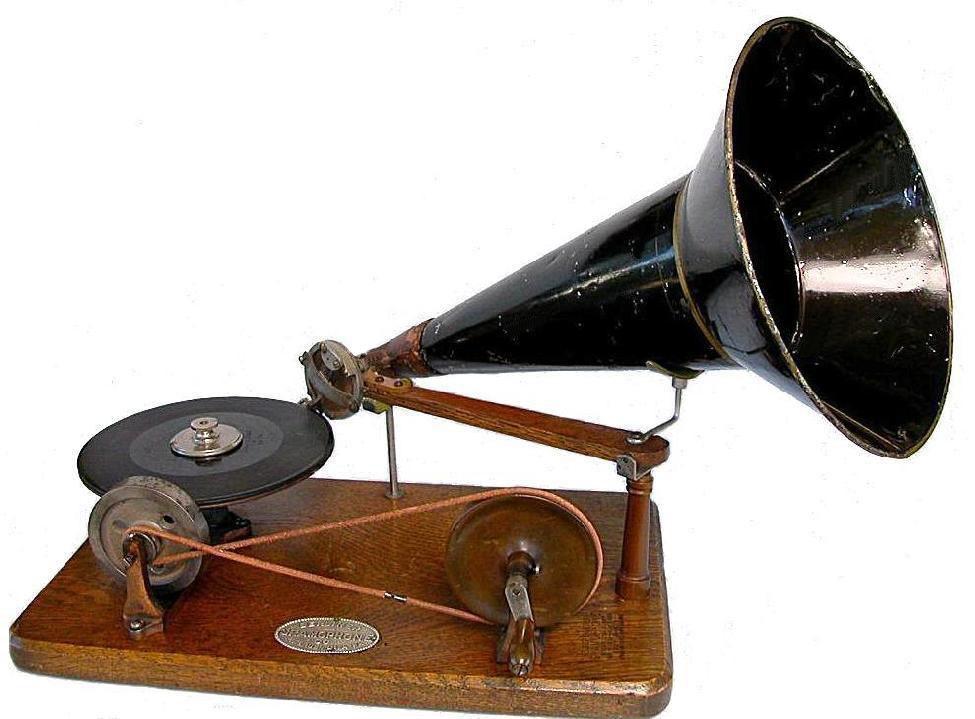

It is hard to imagine that this simple, hand-powered machine was the start
of what would ultimately become an empire, eventually leading to today's RCA Corporation.
It was a seemingly inauspicious beginning but its importance in the history of recorded
sound is incalculable.
German immigrant Emile Berliner invented the first
phonograph to play disc records rather than cylinders. Discs offered certain advantages
over the cylinders of the day: aside from being much easier to manufacture and store,
they were louder and more durable. However, especially in the early years, the sound
quality of discs was much inferior to cylinders. Dubbed the "Gramophone,"
Berliner's first machines had had no motor. The gramophone pictured here originally
cost $15 and despite its simplicity was meant as a serious product -- it was not
a toy. The lack of a motor made it very tedious and difficult for the operator to
manually crank the turntable at a steady speed, and consequently these Berliner machines
were not popular. In early 1896 he hired Frank Seaman, a clever advertising man,
to help promote and improve the very rudimentary Berliner gramophone. Late that same
year Berliner's Gramophone finally became a practical instrument, with a spring-driven
motor developed by Levi Montross. The simple hand-wind Gramophone was soon rendered
obsolete.
With its very short lifespan and extremely tiny production, the
'hand-wind' Berliner is one of the rarest of disc phonographs.

This wonderful photograph, from the collection of the Library of Congress, shows a Berliner hand-wind Gramophone as it looked when brand-new in 1895.